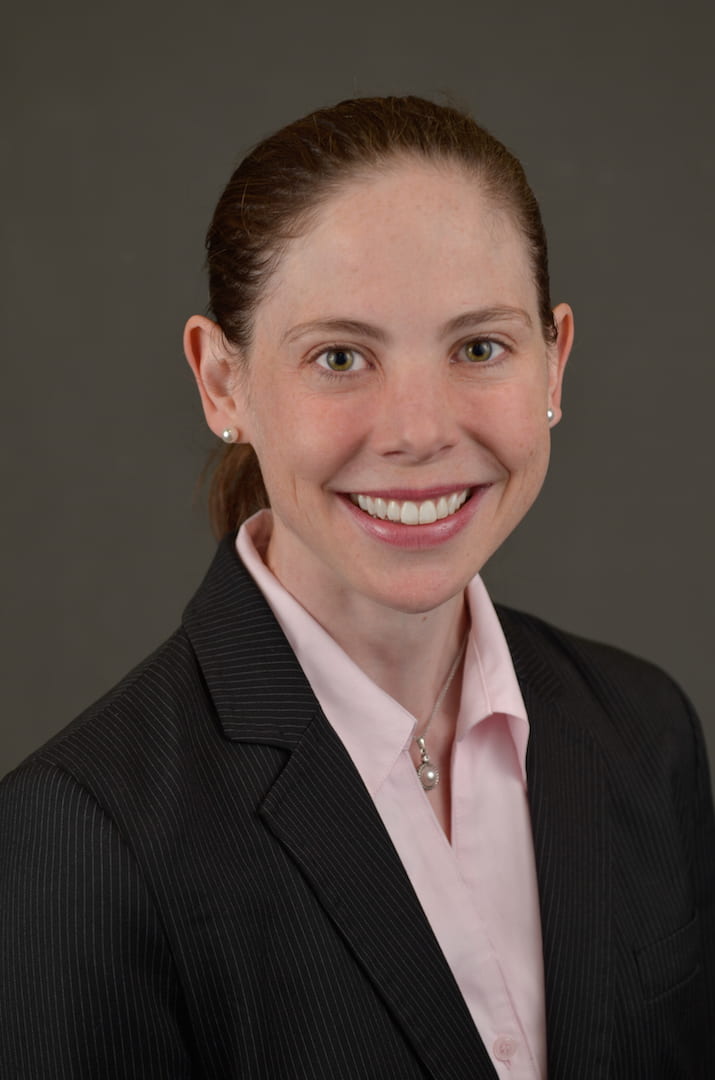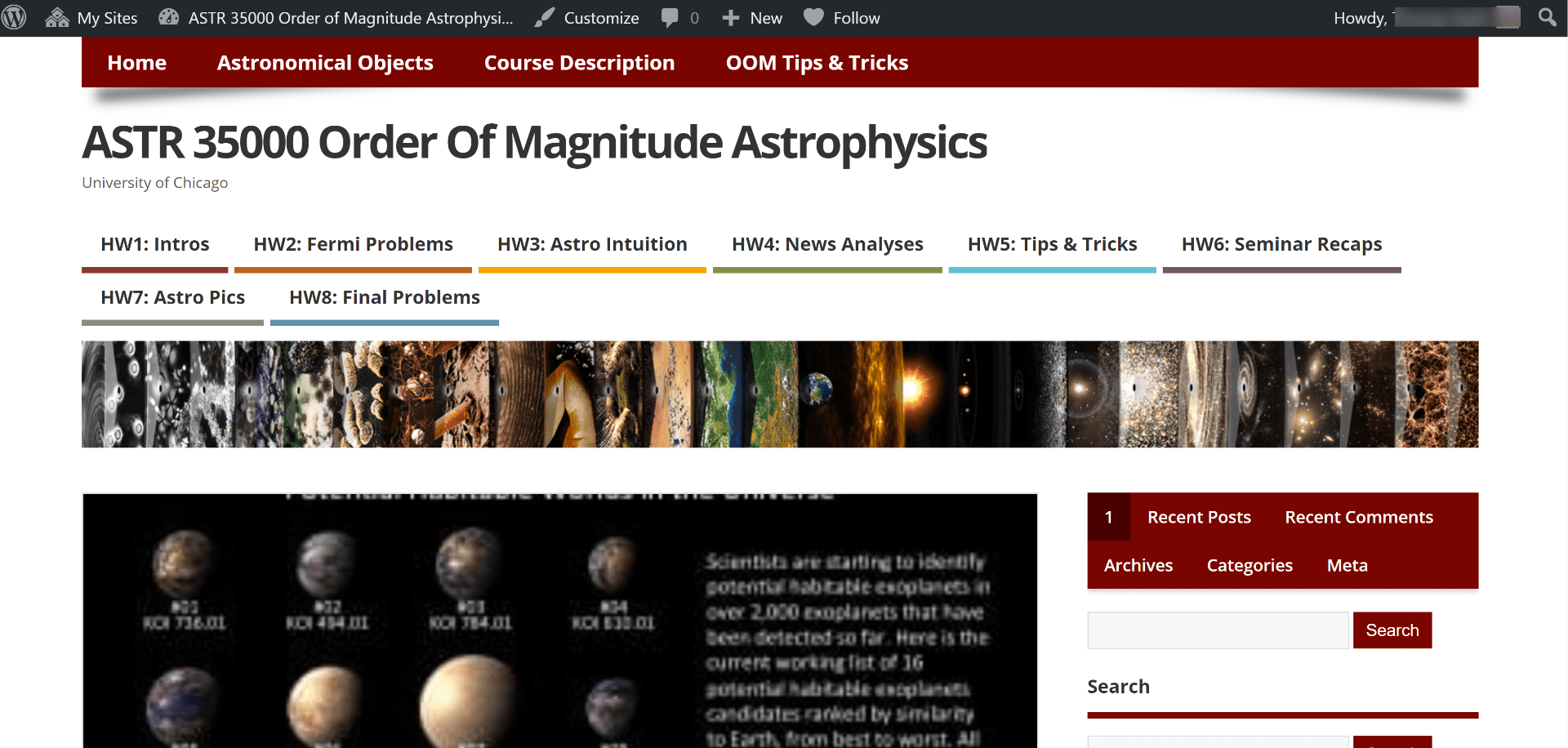Leslie Rogers, Assistant Professor in the Department of Astronomy and Astrophysics and the College, used a Voices blog in her Fall 2020 undergraduate/graduate course “Order of Magnitude Astrophysics” as a tool to introduce her students to problem solving. In the isolating circumstances created by the COVID-19 pandemic, the blog also helped to create a sense of student community.

Prof. Leslie Rogers
The Challenge
The goal of the “Order of Magnitude Astrophysics” course is to help students – many of whom are first- or second-year astronomy graduate students learning the ropes of the discipline – learn spur-of-the-moment reasoning. In a physical classroom, Prof. Rogers would have accomplished this by having her students work in problem-solving groups at the blackboard. She was able to recreate this experience remotely through Zoom breakout rooms during class time, but she also sought a complementary pedagogical approach that would allow students to work and communicate asynchronously (since her class included a number of students in far-flung time zones).
She considered the traditional idea of assigning her students problem sets, but opted against it. Problem sets lacked the social aspect of pedagogy that she was seeking to cultivate. In addition, Prof. Rogers sought a type of assessment that would “allow [her] students the freedom to pose and answer the questions that were of particular interest to them”.
The Solution
Prof. Rogers decided that a course blog would be an ideal digital space in which her students could pose and solve problems. Students, including those widely separated geographically, would be able to view and leave comments on one another’s work, creating a feeling of community among the class. Accordingly, she structured her course so that students’ blog posts would be the principal method of assessing their performance.
In order to ensure consistency of assessment, Prof. Rogers provided her students with a detailed rubric that would let them know what was expected of them in their blog posts. Included in the rubric was a requirement of at least one image per post, which led to an exceptionally visually rich and appealing blog.

A snapshot of the course blog
The class of 26 students received a different prompt each week. In order to ease them into the blogging process, the first prompt was to interview a classmate. Subsequent prompts were planned to give the students guidance while also allowing them the freedom to be creative. The blogging assignments helped to build professional skills and knowledge; for example, one week’s assignment, to select an astronomical image and explain the radiative processes occurring in it, is a common question on exams for doctoral candidacy. Another assignment called on students to write a summary of a research article in the style of Astrobites, a graduate student journal that summarizes astrophysics literature, and connect an order-of-magnitude calculation to it. The ultimate goal was for students to acquire familiarity with the methods, aims, and approaches that are important to success in astronomy and astrophysics.
The Results
Based on anecdotal evidence, Prof. Rogers feels that her students were pleased with the course and its blogging focus; one student even decided to pursue a science journalism internship. The high quality of the blog posts impressed her, and she attributes it to students’ knowledge that their peers would be viewing their work. As a tool, the Voices blogging platform proved easy to use and largely self-explanatory. Some students found the open-ended nature of blogging a challenging departure from what they were used to in STEM education, and Prof. Rogers believes that rubrics are key if others are planning to adopt blogging exercises of their own: the clearer the criteria for assessment, the more successful the outcome will be.
If you would like to learn more about how you can use blogs in your course, we encourage you to visit the Academic Uses of Blogs page on UChicago Voices. You can also contact Academic Technology Solutions to schedule a consultation.
(Featured photo by Jeremy Thomas on Unsplash)


Very interesting use of blogging that seems to also develop communication skills for students. The students’ process for creating these blogs will port extremely well throughout their academic and professional careers.